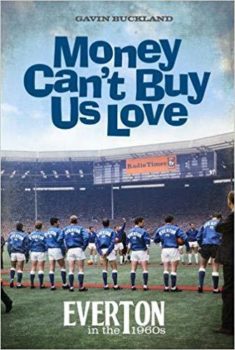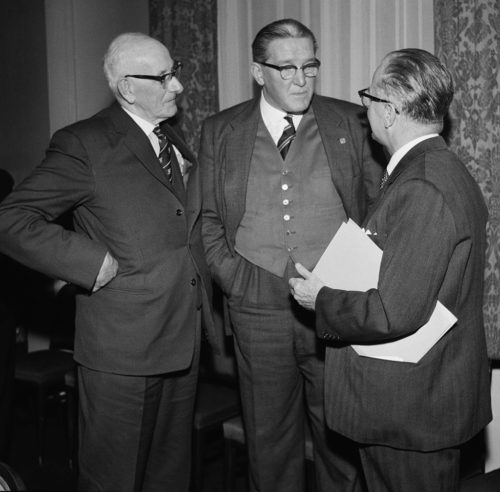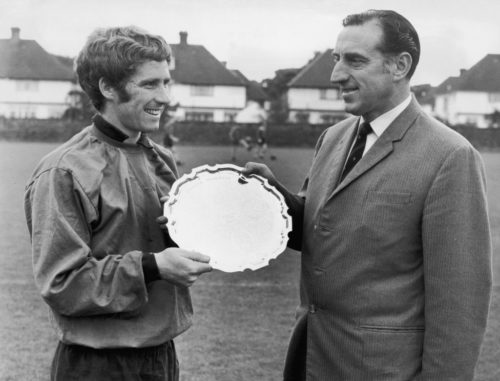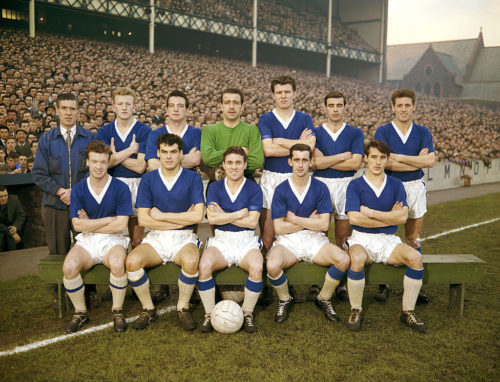Everton’s rise to challenge the top clubs of the 1960s is traced and explored in a new history reviewed by ERIC BROWN.
 The late 1950s represented a huge period of change for Britons still rejoicing over an end to austere post-war rationing.
The late 1950s represented a huge period of change for Britons still rejoicing over an end to austere post-war rationing.
Infant television sets brought flickering, black and white pictures on tiny screens to the few homes that could afford it but radio would rule the airwaves for years through big names such as Tony Hancock, Billy Cotton and Kenneth Horne.
Popular music was about to be transformed with trailblazers like Elvis Presley and Lonnie Donegan beginning to penetrate a constant barrage of saccharin-style American muzak served up by the likes of Guy Mitchell, Perry Como, Tab Hunter and Andy Williams.
The British public turned to football for thrills but Everton failed at first to make the most of this boom. They had slipped into division two and spent three years in the wilderness before returning to the top flight in 1954.
It was not until a Manchester-born pools millionaire became Everton chairman in June 1960 that the club began to emerge from the doldrums. The story of how Littlewoods supremo John Moores re-energised Everton with cash and enthusiasm over a glorious decade is told in Gavin Buckland’s all-embracing history.
Moores soon realised changes were required to fulfil his demand for a winning team. He sacked team boss John Carey during an infamous London taxi ride and brought in Harry Catterick from Sheffield Wednesday. During a glorious Everton decade Catterick established himself alongside Bill Nicholson and Matt Busby as one of the greatest managerial figures in English football.

Catterick, backed by Moores’ cash, brought in star players who steered Everton to two League titles and an FA Cup triumph during the 1960s plus several near-misses in both competitions.
Along the way there were bumps in the road. A Sunday People-disclosed bribery scandal led to a football ban for Catterick’s big buy Tony Kay while the manager faced criticism from his own club’s supporters over the sales of Bobby Collins, and much later, Alan Ball. Disgruntled Everton fans were once reported to have attacked Catterick in a car park after a 1966 match at Blackpool.
Catterick’s right to be regarded as one of the great managers of the 1960s revolves around his use of Roy Vernon and Alex Young in the 1963 title winning team and his construction of the “Holy Trinity” midfield of Alan Ball, Colin Harvey and Howard Kendall who helped land the 1969-70 crown.
In an era when most clubs relied on battering-ram centre forwards like Bolton’s Nat Lofthouse, Catterick paired diminutive Welshman Vernon and tiny Scot Young in a strike partnership all about movement and skill rather than brawn. They left opposing defenders floundering.
Everton’s ups and downs in the decade were all played out against a backdrop of yeah, yeah, yeahs from the Beatles in a spell when music and football combined to make Liverpool one of the world’s most famous cities.

For Everton though, the bubble burst after Catterick’s second title. Catterick never mastered European football and evolving tactics. Failing health saw his powers severely decline in the 1970s.
Curiously for a book subtitled Everton in the 1960s Gavin Buckland’s history continues well into the 1970s which allows for discussion of Alan Ball’s shock departure to Arsenal and the effect on the club of Catterick’s heart attack.
Workaholic Catterick refused to delegate player-spotting duties and claimed he wore out three cars a year travelling to watch players from the terraces disguised in cap, glasses and scarf. On one of these missions he suffered the heart scare that put him out of the game for months.
When he returned his ability to capture leading players had gone. There were failed bids for Mike Channon, Tony Currie and Colin Stein among others. Catterick believed he had signed Archie Gemmill from Preston on a handshake. He told the player to report to Goodison next day for an official signing.

Instead of top players Everton fans were now presented with such offerings as Dave Smallman from Wrexham and Walsall’s Bernie Wright whose name still crops up in conversation when supporters discuss the club’s worst buys. Another puzzle was the departure of promising future England striker Dave Johnson to Ipswich while Everton received journeyman Rod Belfitt, almost 30, in return.
Catterick’s kingdom was crumbling and Moores knew it, acknowledging he should have brought in a new manager after the heart problem. Belatedly Bobby Robson and Jimmy Armfield were approached and Don Revie came within a penstroke of moving to Goodison after telling Leeds players Norman Hunter and Trevor Cherry they would come with him. He changed his mind after accepting Everton’s terms.
This painstakingly researched history by Everton’s official statistician will be welcomed not only by Goodison fans but by all those devotees of football in a vibrant decade for the game.
Money Can’t Buy Us Love by Gavin Buckland is published by deCoubertin Books. Price £20
RELATED NEWS
- A life behind the lens by award-winning photographer Richard Pelham
- Happy 50th to the Football Year Book
- Nationwide Annual is out
- Cardus book a must
- Celebrating half a century of Shoot
- Harris wins race for first Liverpool book
- Ex BBC man Warner pens guide to being made redundant
- Cricket and cake…when everything stops for tea